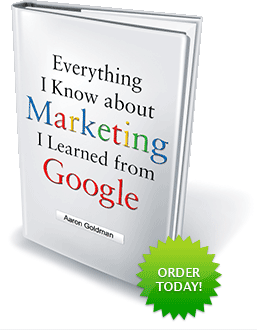Jill Balis
EVP and Managing Director
SMG Search
3-17-10
How should marketers be thinking about search engine marketing as part of the broader mix?
People don’t just magically search. Something compelled them to do that.
Google has profited from tons of extra credit. At Orbitz [where I ran the eMarketing team], we would’ve done some things differently [if I knew then what I know now]. We were too focused on the last click ROI [return on investment]. Search was king. We kept shifting dollars to Google and it was hard to justify display based on last click methodology so the general consensus was that it “wasn’t working.” After time, the brand weakens and search performance will suffer. People stop searching for the brand (which are the types of searches that perform best) or CTR [click-through rate] decline and costs increase.
Media that drives brand terms should get credit. [Marketers need to] understand the things that drive search, and ultimately conversions, and give attribution accordingly. Find the right metrics to measure and don’t necessarily hold everything to a last click ROI metric. Determine beforehand what your campaign goals are and then develop KPIs [key performance indicators] that measure those goals. Search can be very effective in driving brand awareness and consideration. If that is the goal of a campaign then make sure your KPIs align with those goals. [For one of my current clients, we] did analysis which showed significant lift in Search conversions when users were exposed to display ads.
Sometimes people go overboard with attribution. [Giving] 100% view-through [credit] is crazy. We don’t know if people actually viewed [the ad, all we know is that it was served]. Don’t measure display on a click-thru. Measure lift in conversions vs. no display and apply lift % to view through (i.e. if there is a 20% lift vs. control, attribute 20% of the view thrus instead of 100%). Take baby steps for attribution. We know people that do X action will convert. Develop proxies and use them to inform KPI’s and continue to evolve them. Too many people wait to have it all figured out and then either over attribute or leave money on the table.
At SMG, we’ve created weighted measurement models based on likelihood to purchase. For an auto client, we worked with the client to identify purchase indicators. We use engagement measures such a product comparisons, configurations, quote requests and locate a dealer to measure likelihood to purchase. We can’t track SEM [search engine marketing] precisely to a car sale, we use these indicators to determine which keywords are most likely to drive sales, which is far more effective than just using click-thru rates as success indicators or assuming each type engagement is worth the same. We have been able to validate and refine weightings over time with research.
ROAS [return on advertising spend] can be misleading too because it doesn’t take into account [profit] margin. It’s fine if you’re selling one product but typically different products and categories have different margins. For example, at Orbitz hotels, vacation packages and cruises were much more profitable than airline tickets. We switched from [measuring] CPT [cost-per transaction] to margin tracking (as a ratio to cost as well as net margin) and optimized against margin vs. revenue. [Doing so,] allowed us to increase SEM budgets. Marketing was no longer a cost, it was a sales channel.
Can you share some examples of brands that use SEM insights to inform their overall marketing strategies?
There’s the US Cellular example of testing different creatives via SEM to decide what copy to use in print ads.
GM develops content based on what people search for (eg, hybrids).
Kellogg’s built content for “weight loss” because query volume was higher for that than “healthy food.” You have to find a balance between what your brand’s about and what people are searching for. [For example,] Nobody searches for “sporting goods” but many retailers have a section of their site named “sporting goods.”
User reviews can be a great way to get more content. The biggest challenge is getting content developed and landing pages built on the fly. [It can be hard for marketers] to keep up with all the opportunities that SEM insights reveal.
To attract audiences, [marketers should] leverage their video assets and co-branded sponsorships of big events that cost millions like the Olympics.
Kellogg’s did a custom program with Microsoft and realized it needed to send people to it. [Marketers need to] take the last step. Don’t fumble at the goal-line.
SEM is so much more than driving transactions, it drives experiences. Before, it was about driving people to websites, now there’s content everywhere. Drive people to credible 3rd-party sources talking about your brand or [drive them to] social networks to build communities.
Use SEM to surface everything you’re doing. Use search for reputation management. Too many companies don’t respond quickly enough. Toyota took too long to respond [when addressing the recall]. GM was up right away [when that happened] with its “May the Best Brand Win” campaign, reinforcing quality messages.






